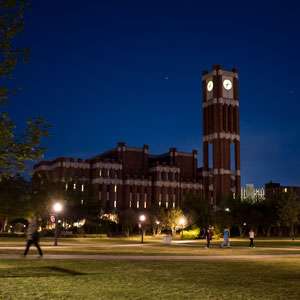The University of Oklahoma has been awarded an eight-year, $161 million NASA contract for a first-of-its-kind Earth science mission that will extend our nation’s lead in measuring key carbon-based greenhouse gases and vegetation health from space to advance understanding of Earth’s natural exchanges of carbon between land, atmosphere and ocean. NASA first announced OU as the recipient in December 2016. Serving as the single largest in the University’s history, the contract begins July 1, 2017.
“The awarding of this contract by NASA marks one of the most exceptional accomplishments in OU history,” said OU President David L. Boren. “I applaud Dr. Berrien Moore and our research team for their outstanding efforts in achieving this milestone.”
Berrien Moore, OU Vice President for Weather and Climate Programs, will lead the development of the Geostationary Carbon Cycle Observatory (GeoCarb), which will monitor plant health and vegetation stress throughout the Americas, and probe the natural resources, sinks and exchange processes that control carbon dioxide, carbon monoxide and methane in the atmosphere.
“We have worked extremely hard to get to this point and now we can start to see the results. We’ll move into dedicated GeoCarb office space this summer and hire staff in the coming months. Every day we wake up and think it was just a dream, but we are here and moving forward. What an exciting time to be at the University of Oklahoma,” Moore said.
The GeoCarb payload will be launched on a commercial communications satellite to make daily observations over the Americas from an orbit of approximately 22,500 miles above the equator. OU was competitively selected from 15 proposals submitted to NASA’s second Earth Venture Mission announcement of opportunity for small orbital investigations of the Earth system.
Mission collaborators include the Lockheed Martin Advanced Technology Center in Palo Alto, California; SES Government Solutions Company in Reston, Virginia; Colorado State University in Fort Collins; NASA’s Ames Research Center in Moffett Field, California; Goddard Space Flight Center in Greenbelt, Maryland; and Jet Propulsion Laboratory in Pasadena, California. Other contributors to the project are from Australia, France and Mexico.
The Earth Venture missions are part of NASA’s Earth System Science Pathfinder program. NASA’s Langley Research Center in Hampton, Virginia, manages the ESSP program for the agency’s Science Mission Directorate.



